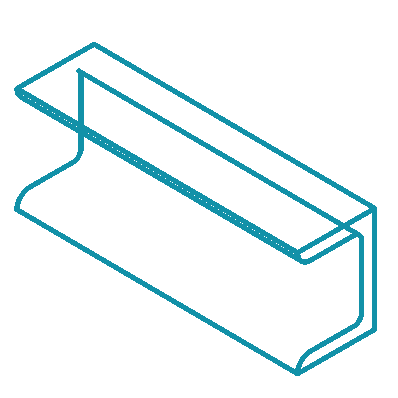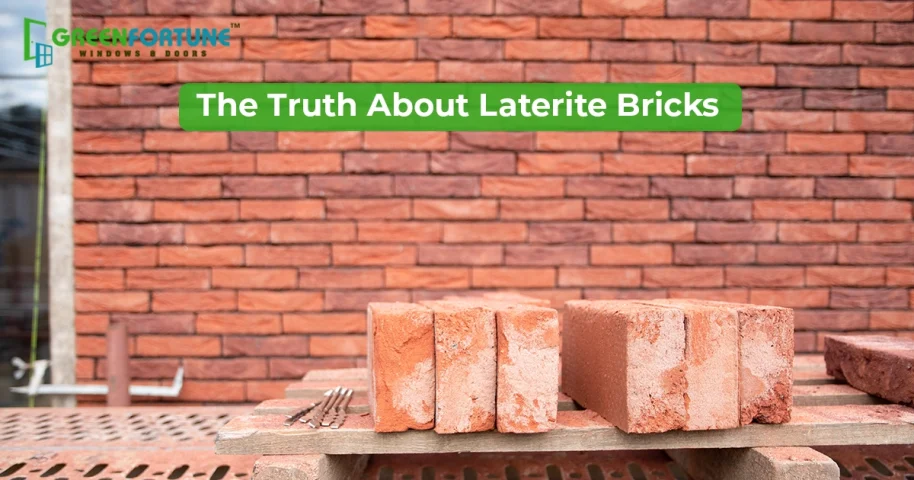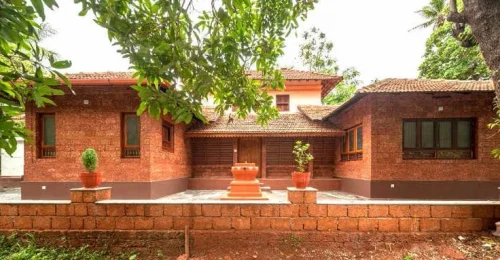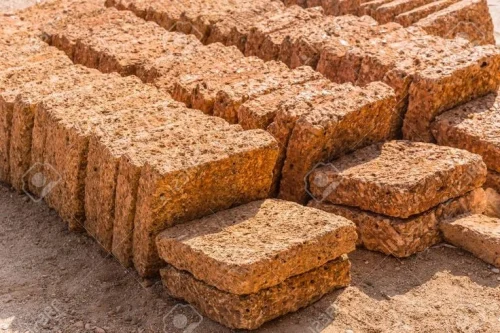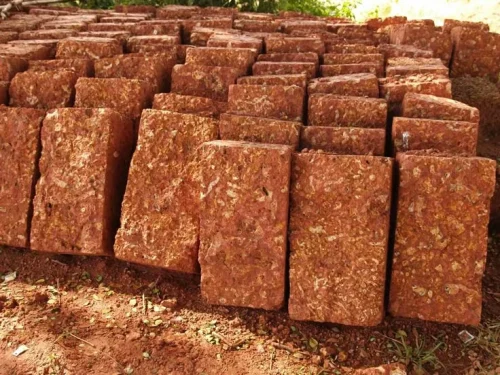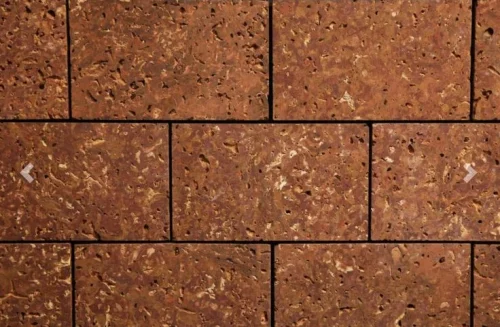
A Homeowner’s Guide to Swimming Pool Construction Rules and Safety in India
April 30, 2025
Discover the Bifold Doors Design for Modern Homes
April 30, 2025What comes to your mind when you hear the word “bricks”?
Probably the classic red ones, right?
But in some places, especially in Kerala, Goa, Odisha, and parts of Maharashtra and Karnataka, you’ll notice houses built with reddish-brown bricks. Those are called laterite bricks.
Unlike cement bricks that are manufactured, laterite bricks are cut directly from laterite stone- a soft, reddish rock found in tropical, high-rainfall regions. These bricks have a raw, rustic, and earthy look. They’re natural, affordable, and eco-friendly.
At this point, you might be thinking, “Wow, laterite bricks sound like a great option.”
But here’s something most people won’t tell you. Laterite bricks come with their own set of cons. And if you’re not careful, they can cause more trouble than you expect in the future.
Also read: Different types of construction bricks you must know
Why Laterite Blocks Are Not Recommended For Construction?
Laterite bricks, also known as laterite stone bricks, laterite building blocks, or natural laterite blocks, come in shades of red, brown or pink, depending on the region. They are usually not recommended by the masons because of the disadvantages listed below.
Problem #1: They soak up water like a sponge
Laterite bricks may look solid, but the truth is, they are highly porous. They absorb water easily, especially during rain. If not plastered properly, walls made of laterite blocks can
- Develop cracks and holes over time
- Become soft and weak in corners
- Lead to dampness and fungal growth inside rooms
Problem #2: They are not that strong
Laterite bricks are not as strong as cement bricks. They are fine for 1 or 2 floors. But today, buildings are more complex with heavier roofs, extra rooms, electrical lines, and water tanks. Laterite bricks just cannot handle that kind of load the way cement bricks can.
Problem #3: No standard size
Laterite bricks are cut manually, and so they often come in uneven sizes. Some might be thicker, some thinner. This leads to
- More wastage of mortar
- Difficulty in alignment
- Extra time to adjust each layer
- Need for more plaster to even out the surface
All of these add to both material and labour costs.
Problem #4: Not suitable for every climate
Laterite bricks work well in places where it’s warm and dry most of the year or where rainfall is mild or short-lived.
But in areas with heavy rainfall or coastal humidity, they don’t last long. Walls made from laterite stone can erode, crumble or leak over the year, unless plastered and painted very well. They are also less resistant to natural forces like earthquakes.
Problem #5: High Maintenance
If you go ahead with the laterite bricks, you will need to
- Plaster every wall completely
- Paint or limewash the exteriors often
- Inspect for cracks or damp spots every year
- Fix any erosion before it spreads.
Though you will be able to save money upfront, you might spend more in the long run on repairs and repainting.
Let’s compare it to cement bricks.
Also read: Why are porotherm bricks the best choice for modern homes?
Laterite Bricks vs Cement Bricks
Feature | Laterite Bricks | Cement Bricks |
Strength | Moderate | High |
Water resistance | Low | Good |
Size uniformity | Poor | Excellent |
Maintenance | High | Low |
Eco-friendly | Yes | No |
Cost | Lower | Slightly higher |
Durability | 40 to 50 years (with care) | 80+ years |
But Why Do People Still Use Laterite Bricks?
People still use laterite bricks because
- They are cheap in areas where laterite is found.
- They are readily available. All you need to do is just dig and cut
- They give a natural, raw, rustic look to the house
- They help keep the house cool, especially in hot places
- They are an eco-friendly choice
If you are in a region with laterite stone, builders are likely to suggest it because it saves on transportation, manufacturing and costs.
So, Can You Use Laterite Bricks?
If you are from a region where rainfall is heavy or often, it’s better to avoid. Here’s a smart way to use dry areas:
Use laterite bricks for
- Exterior walls (if plastered properly)
- Boundry walls
- Low-rise rural homes
- Garden walls or compound walls
- As cladding (just for look, not structure)
Avoid using them for
- Foundations
- Water tanks
- High-load beams or columns
- Basement walls or damp areas
Pro Tips To Use Laterite Bricks For Your HomeIf you love the natural red look of laterite,
|
Final Takeaway
Laterite bricks are not bad. They have been used for centuries and are still loved for their look. But they’re not ideal for areas with heavy rain, multi-storey buildings, or if you prefer low maintenance. So, yes, think twice before using laterite bricks!
If you are planning to use uPVC windows and doors for your homes, check out GreenFortune’s uPVC range. Our products are weather-resistant, easy-to-maintain, long-lasting, fire-retardant, eco-friendly, affordable and stylish-looking.
Explore uPVC doors and windows now!
FAQs
1) How much do laterite bricks cost?
Laterite bricks cost between INR 15 and 25 each. Since they are bigger than, 1 is equal to 2 to 3 normal bricks. So, you will need fewer of them for the same wall area. So, it’s cheaper.
2) How strong is laterite?
Laterite bricks are suitable for small houses and boundary walls. But it is not strong enough and cannot take heavy loads like cement bricks. It needs plastering to stay strong over time.
3) Which is better, laterite or brick?
Cement bricks are better when compared to laterite. It is because laterite bricks are cheaper and eco-friendly, but cement bricks are stronger, more uniform, and last longer with less maintenance.


